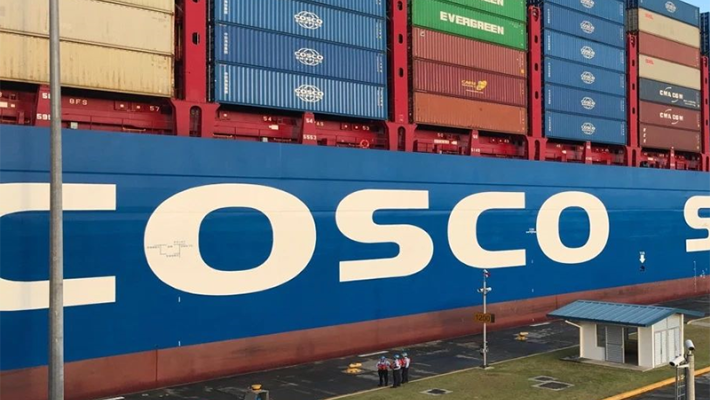Freight Forwarder Insights
Huin International Logistics Latest Articles
Exploring the Current State and Future Trends of International Ocean Freight
Introduction:
The international ocean freight industry has long been the backbone of global trade, facilitating the movement of goods across continents and connecting businesses in different corners of the world. As the world becomes increasingly interconnected, it is crucial to examine the current situation, analyze prevailing trends, and identify future directions shaping the international ocean freight industry. This article delves into these aspects, offering valuable insights into the dynamic landscape that businesses and stakeholders navigate daily.
Current Situation and Analysis:
The international ocean freight industry is currently facing a myriad of challenges. The COVID-19 pandemic has significantly disrupted global supply chains, causing congestion at major ports and shortages of shipping containers. The unpredictability of the pandemic, coupled with stringent safety protocols, has led to delays, increased costs, and inefficiencies. Additionally, geopolitical tensions and trade disputes have added layers of complexity to international trade, impacting the flow of goods across borders.
Despite these challenges, the international ocean freight industry has displayed remarkable resilience and adaptability. Industry players have embraced technological advancements and digital platforms to streamline processes, enhance visibility, and improve overall operational efficiency. Automation, artificial intelligence, and blockchain technologies are revolutionizing operations, with the potential to transform how goods are tracked, traced, and verified along the supply chain.
Trends Shaping the Industry:
1. Sustainable Shipping: With growing concerns about climate change, the international ocean freight industry is witnessing a shift towards sustainability. Stakeholders are increasingly focusing on reducing carbon emissions, exploring alternative fuel sources, and implementing eco-friendly practices. Ships powered by liquefied natural gas (LNG) and the adoption of innovative hull designs to improve fuel efficiency are becoming prevalent trends.
2. E-commerce and Last-Mile Delivery: The rise of e-commerce has reshaped consumer behavior, placing an increased emphasis on last-mile delivery. The international ocean freight industry is adapting to these changes by developing specialized services and infrastructure to handle the growing demand for fast and efficient delivery. Collaborations between shipping lines, logistics providers, and e-commerce platforms are on the rise to facilitate seamless integration and improve customer experiences.
3. Digitalization: The digital revolution is transforming the international ocean freight industry. Real-time tracking, electronic documentation, and data analytics have become essential tools for optimizing operations, reducing costs, and enhancing supply chain visibility. Shippers and freight forwarders are leveraging digital platforms to gain valuable insights, automate processes, and make informed decisions.
4. Collaboration and Alliances: The formation of strategic alliances and collaborations among shipping lines has become a dominant trend in the industry. These partnerships allow for economies of scale, network optimization, and enhanced service options for customers. Mega-alliances, such as the Ocean Alliance, THE Alliance, and 2M Alliance, have reshaped the competitive landscape, leading to increased efficiency and capacity utilization.
Future Directions:
Looking ahead, the international ocean freight industry must address several key areas to navigate the ever-evolving landscape successfully. These include:
1. Resilience and Risk Management: Developing robust risk management strategies, contingency plans, and diversification of supply chains will be vital to mitigate disruptions caused by global crises, natural disasters, or geopolitical events.
2. Cybersecurity: As the industry becomes more digitized, safeguarding systems and data from cyber threats is imperative. Collaboration between industry stakeholders and regulatory bodies to establish guidelines and frameworks for cybersecurity will play a crucial role in securing the global supply chain.
3. Sustainability and Green Initiatives: The industry must continue its transition to greener practices and invest in innovative technologies to reduce carbon emissions and minimize environmental impact. Governments, industry associations, and businesses should collaborate to establish global standards and incentives for sustainable shipping.
4. Talent Development: Building a skilled workforce equipped with the necessary knowledge of emerging technologies and global trade regulations will be essential. Education and training programs should be tailored to meet the evolving needs of the industry, fostering a pool of talent capable of driving innovation and adapting to future challenges.
Conclusion:
The international ocean freight industry is standing at the crossroads of technological advancements, sustainability imperatives, and evolving customer expectations. By navigating the challenges and capitalizing on the opportunities presented by emerging trends, stakeholders can position themselves for success. The ability to adapt, embrace digitalization, prioritize sustainability, and foster collaborations will be critical in shaping the industry's future direction and ensuring the smooth flow of international trade for years to come.
